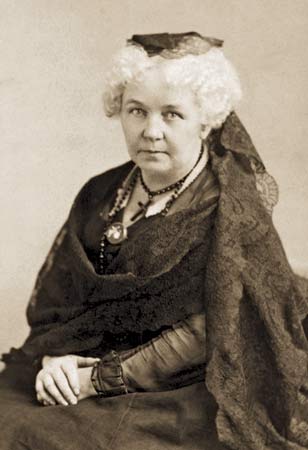Oskar and Emilie Schindler – Yad Vashem
schindler’s list
oskar schindler was born on april 28, 1908 in zwittau/moravia (today in the czech republic).
His middle-class Catholic family belonged to the German-speaking community in the Sudetenland. The young Schindler, who attended German elementary school and studied engineering, was expected to follow in his father’s footsteps and take over the family farm machinery plant. Some of Schindler’s childhood schoolmates and neighbors were Jewish, but with none of them did he develop a close or lasting friendship. Like most Sudeten German-speaking youth, he subscribed to Konrad Henlein’s Sudeten German Party, which strongly supported Nazi Germany and actively fought for the breakup of Czechoslovakia and its annexation by Germany. When the Sudetenland was incorporated into Nazi Germany in 1938, Schindler became a formal member of the Nazi Party.
shortly after the outbreak of war in september 1939, thirty-one-year-old schindler appeared in occupied krakow. Home to some 60,000 Jews and the seat of the German occupation administration, the General Government, the ancient city proved highly attractive to German businessmen, hoping to profit from the misfortunes of the subjugated country and make a fortune. Shrewd by nature and not overly scrupulous, Schindler at first seemed to thrive in this environment. in October 1939 he took over a dilapidated enamel factory formerly owned by a Jew. He deftly maneuvered his steps, following the shrewd business advice of a Polish Jewish accountant, Isaac Stern, and began to build a fortune. The small company in Zablocie, on the outskirts of Krakow, which began to produce kitchen utensils for the German army, began to grow by leaps and bounds. after just three months he already had a working group of about 250 Polish workers, including seven Jews. by the end of 1942, it had been converted into a gigantic enamel and ammunition production plant, occupying some 45,000 square meters and employing nearly 800 men and women. Of these, 370 were Jews from the Krakow Ghetto, which the Germans had established after entering the city.
A natural hedonist and gambler, Schindler soon adopted a wasteful lifestyle, partying late into the night, hobnobbing with top SS officers, and flirting with beautiful Polish women. Schindler seemed to be no different from other Germans who had come to Poland as part of the occupation administration and its associates. the only thing that differentiated him from other war profiteers was the humane treatment he gave to his workers, especially the Jews.
Schindler never developed any ideologically motivated resistance against the Nazi regime. however, his growing disgust and horror at the senseless brutality of the Nazi persecution of the defenseless Jewish population produced a curious transformation into the unprincipled opportunist. Gradually, the selfish goal of lining his pockets with money receded into the background of the all-consuming desire to rescue as many Jews as he could from the clutches of the Nazi executioners. In the long run, in his efforts to get his Jewish workers to safety during the war, he was willing not only to squander all his money, but also to risk his own life.
Schindler’s most effective tool in this privately conceived rescue campaign was the privileged status his plant enjoyed as a “business essential to the war effort” granted by the military armaments inspectorate in occupied Poland. this not only qualified him for lucrative military contracts, but also allowed him to draw on Jewish laborers who were under the jurisdiction of the ss. When his Jewish employees were threatened with deportation to Auschwitz by the SS, he was able to claim exemptions for them, arguing that his deportation would seriously hamper his efforts to maintain production essential to the war effort. he did not hesitate to falsify records, labeling children, housewives and lawyers as mechanical and metallurgical experts and, in general, covering up unskilled or temporarily disabled workers as much as he could.
The Gestapo arrested him several times and interrogated him on charges of wrongdoing and favoring the Jews. However, Schindler would not give up. In 1943, at the invitation of the American Jewish Joint Distribution Committee, he undertook a very risky trip to Budapest, where he met with two representatives of Hungarian Jewry. He briefed them on the desperate situation of the Jews in Poland and discussed possible ways of relief.
in march 1943, the krakow ghetto was being liquidated and all remaining jews were being transferred to the plaszow labor camp on the outskirts of krakow. Schindler convinced SS-Haupsturmführer Amon Goeth, the camp’s brutal commandant and personal drinking buddy, to let him set up a special subcamp for his own Jewish workers at the Zablocie factory. there he was better able to keep the Jews in relatively tolerable conditions, augmenting their sub-subsistence diet with food bought on the black market with his own money. the factory compound was declared off-limits to the ss guards guarding the subcamp.
At the end of 1944, Plaszow and all its subcamps had to be evacuated before the Russian advance. most of the camp’s inmates, more than 20,000 men, women, and children, were sent to death camps. Upon receiving the evacuation order, Schindler, who had approached the appropriate section in the Supreme Command of the Army (OKW), managed to obtain official authorization to continue production in a factory that he and his wife had set up in Brünnlitz, in his native Sudetenland. Zablocie’s entire workforce, to which many new names from the Plaszow camp were sneakily added, was supposed to move to the new factory site. however, instead of being taken to brunnlitz, the 800 men, including 700 jews, and the 300 women on schindler’s list were diverted to gross-rosen and auschwitz, respectively.
When he learned what had happened, Schindler at first managed to secure the release of the men from the Gross-Rosen camp. he then proceeded to send his German personal secretary to Auschwitz to negotiate the release of the women. the latter managed to obtain the release of the Jewish women by promising to pay RM7 per day per worker. this is the only recorded case in the history of the death camp in which such a large group of people were allowed to leave alive while the gas chambers were still in operation.
one of the most notable humanitarian acts carried out by oskar and emilie schindler involved the case of 120 jewish male prisoners from goleszow, a subcamp of auschwitz. The men had been working there at a quarry plant belonging to the SS-operated company “German Earth and Stoneworks”. With the arrival of the Russian Front in January 1945, they were evacuated from Goleszow and transported west in sealed cattle cars, without food or water. At the end of a grueling seven-day journey in the dead of winter, SS guards finally placed the two sealed cattle cars with their human cargo at the gates of Brunnlitz. emilie schindler arrived just in time to prevent the ss camp commander from sending the train back. Schindler, who had rushed back to camp after running some errand to buy food outside, barely managed to convince the major that she desperately needed the people who were locked in the train to work.
As the carriages were forced open, a terrifying sight was revealed. The Schindlers took charge of the 107 surviving, terribly frostbitten and terribly emaciated, arranging for medical treatment and gradually feeding them back to life. Schindler also confronted the Nazi commander who wanted to cremate the frozen corpses in the wagons, and arranged for their burial with full Jewish religious rites on land near the Catholic cemetery, which he had purchased especially for that purpose.
in the last days of the war, just before the russian army entered moravia, schindler managed to smuggle it into germany, into allied controlled territory. the wartime industrial magnate was penniless. Jewish aid organizations and survivor groups supported him modestly over the years, helping to finance his (ultimately, unsuccessfully) emigration to South America. When Schindler visited Israel in 1961, the first of seventeen visits, he received an overwhelming welcome from 220 enthusiastic survivors. he continued to live partly in israel and partly in germany. After his death on october 9, 1974 in hildesheim, germany, the grieving survivors brought his savior’s remains to israel for final rest in jerusalem’s catholic cemetery. the inscription on his tomb reads: ‘the unforgettable savior of 1,200 persecuted Jews”.
in 1962 a tree was planted in schindler’s honor on the avenue of the just at yad vashem. On June 24, 1993, Yad Vashem recognized Emilie and Oskar Schindler as Righteous Among the Nations.
supported by: conference on jewish material claims against germany


